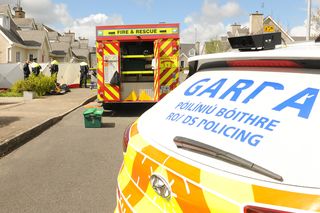National broadband plan will fail those in our country areas
High-speed internet access is more important than ever but getting fibre to all homes is not the way forward in rural Ireland
The National Broadband Plan, the Government’s initiative to provide high-speed fibre internet connections to every home in the country, has been hit with setbacks, budget cuts and delays almost since its inception.
The latest Switcher.ie survey brought in to focus the huge variance of broadband speeds across Ireland and the real problems facing rural businesses and communities without high-speed internet access.
The National Broadband Plan, the Government's initiative to provide high-speed fibre internet connections to every home in the country, has been hit with setbacks, budget cuts and delays almost since its inception. This problem seems destined to continue with no end in sight. What was supposed to be delivered in 2015 is now not even planned to start until mid-2018 and is unlikely to fully materialise until 2023 at the earliest. This will leave thousands of rural households and businesses with a prohibitively slow internet connection.
While it's a difficult question to confront, we shouldn't be afraid to ask it: is the National Broadband Plan in its present form actually feasible? Considering our geography and existing infrastructure, is it financially and logistically possible to deliver high-speed fibre-optic internet to every home in Ireland?
While more and more of us are gravitating towards major towns and cities, Ireland is still mostly rural. Laying fibre-optic cable isn't easy, or cheap. Roads must be closed and footpaths dug up. These difficulties are multiplied significantly in the country, where kilometres of hi-tech cable need to be passed through private farmland, secondary roads and down boreens to reach solitary houses and isolated townlands.
There are still too many unanswered questions. If the Government puts down fibre- optic cable along a main road, will it be up to the household or the business to pay to have it connected the extra distance to their front door? This would cost thousands. Will this cost be subsidised or will the consumer have to pony up the money upfront? And how much of a monthly charge consumers will have to pay? We simply do not know.
What we do know is that similar commercial and government initiatives to get fibre to the home in other countries have proved too costly and expensive and are being replaced with more advanced, future-proofed wireless technologies.
The Australian government launched its own broadband initiative a number of years ago, and these very problems were encountered; it was not cost-effective or practical to deliver fibre-optic cable to remote areas. They turned to fixed wireless as a solution.
And it's not only cost-conscious governments reassessing their plans: Google, arguably the world's foremost tech company, with virtually unlimited funds, has made drastic revisions to its own broadband project in the United States, which was initially focused on delivering ultra-high-speed fibre-optic connections.
When consumers proved unwilling to pay the price of connecting their homes to a fibre-optic network and paying for a service they didn't need, Google realised the impracticality and commercial reality and announced that a switch from fibre-to-the-home to fixed wireless.
Fixed wireless bypasses the difficulties of laying down kilometres of cable by transmitting a signal through the air which is then picked up by a receiver.
The National Broadband Plan is promising internet speeds of up to one gigabit per second (or a thousand megabits). Does the average household need that kind of speed? As the Switcher.ie survey shows, the average and perfectly sufficient broadband speed in Dublin is 45 megabits. Today, advanced fixed wireless can provide a connection speed of up to 200 megabits and is more than capable of servicing the average household and business. Indeed, this is way beyond what the average household uses, and even as internet consumption increases in the years ahead (and wireless speeds along with it), we're still a very long way from requiring a full gigabit.
But even fixed wireless internet is under threat. An upcoming auction of the wireless "spectrum" - the available bandwidth that internet companies can use to provide advanced wireless services - could see mobile operators and larger telecoms companies with a vested interest in being subsidised to rollout fibre, snap up large sections of it, squeezing out wireless suppliers essential to the provision of rural broadband.
If this happens, compounded by further delays to the National Broadband Plan, accessing high-speed internet could become even more difficult for thousands of homes and businesses, and those who rely on fixed wireless internet already may actually lose their existing connections. As we stand, thousands of homes and businesses dependent on existing fixed wireless connections are about to be put into limbo by the communications minister.
Over the past two years, we have advised the Government, the Communications Regulator and Minister for Communications Denis Naughten of the global shift to fixed wireless as a solution to deliver high-speed broadband to rural areas urging them, in the national interest, to safeguard part of the spectrum for fixed wireless, thereby assuring internet access for thousands of people into the future. To date, this has been ignored.
There are undeniable problems with Ireland's internet infrastructure and these need to be addressed as a matter of urgency; but that doesn't mean that the National Broadband Plan is the all-curing panacea. Indeed, assuming the most optimistic rollout of fibre, our own estimates suggest that there will still be roughly 200,000 homes and businesses that will need a fixed-wireless solution. If the spectrum for fixed wireless is no longer available, in addition to hindering the provision of real, workable solutions in a much shorter time frame, these homes and businesses could be the collateral damage of the Government's blinkered view of broadband provision.
Tech multinationals and other national governments are reconsidering fibre fundamentalism, and we should be doing the same. A refusal to rationally examine the National Broadband Plan and explore more economic alternatives will see us locked into a costly project for decades to come, especially if wireless providers are forced out of the market. Creating a new financial black hole, like Irish Water, is not desirable for either the public or the Government. By 2023, it'll be too late to say we got it wrong.
Brian O'Donohoe is the commercial director of broadband provider Imagine
Join the Irish Independent WhatsApp channel
Stay up to date with all the latest news















